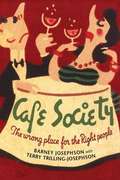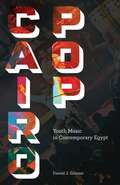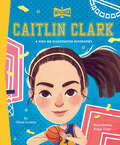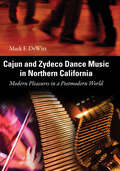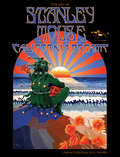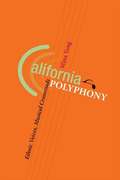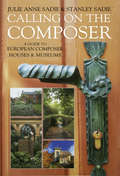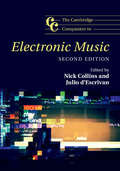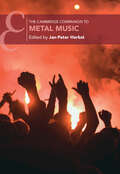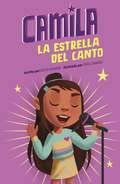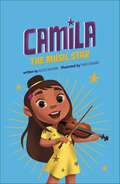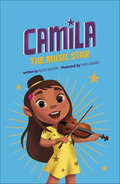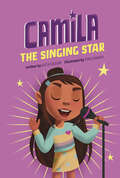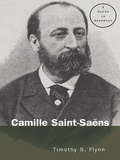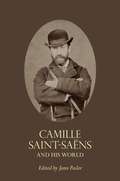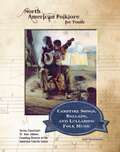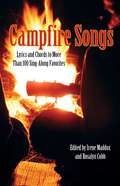- Table View
- List View
Cafe Society: The Wrong Place for the Right People (Music in American Life)
by Dan Morgenstern Barney Josephson Terry Trilling-JosephsonSet against the drama of the Great Depression, the conflict of American race relations, and the inquisitions of the House Un-American Activities Committee, Cafe Society tells the personal history of Barney Josephson, proprietor of the legendary interracial New York City night clubs Cafe Society Downtown and Cafe Society Uptown and their successor, The Cookery. Famously known as "the wrong place for the Right people," Cafe Society featured the cream of jazz and blues performers--among whom were Billie Holiday, Big Joe Turner, Lester Young, Buck Clayton, Big Sid Catlett, and Mary Lou Williams--as well as comedy stars Imogene Coca, Zero Mostel, and Jack Gilford, the boogie-woogie pianists, and legendary gospel and folk artists. A trailblazer in many ways, Josephson welcomed black and white artists alike to perform for mixed audiences in a venue whose walls were festooned with artistic and satiric murals lampooning what was then called "high society." Featuring scores of photographs that illustrate the vibrant cast of characters in Josephson's life, this exceptional book speaks richly about Cafe Society's revolutionary innovations and creativity, inspired by the vision of one remarkable man.
Cairo Pop: Youth Music in Contemporary Egypt
by Daniel J. GilmanCairo Pop is the first book to examine the dominant popular music of Egypt, shababiyya. Scorned or ignored by scholars and older Egyptians alike, shababiyya plays incessantly in Cairo, even while Egyptian youth joined in mass protests against their government, which eventually helped oust longtime Egyptian president Hosni Mubarak in early 2011. Living in Cairo at the time of the revolution, Daniel Gilman saw, and more importantly heard, the impact that popular music can have on culture and politics. Here he contributes a richly ethnographic analysis of the relationship between mass-mediated popular music, modernity, and nationalism in the Arab world.Before Cairo Pop, most scholarship on the popular music of Egypt focused on musiqa al-ṭarab. Immensely popular in the 1950s and &’60s and even into the &’70s, musiqa al-ṭarab adheres to Arabic musical theory, with non-Western scales based on tunings of the strings of the &‘ud—the lute that features prominently, nearly ubiquitously, in Arabic music. However, today one in five Egyptians is between the ages of 15 and 24; half the population is under the age of 25. And shababiyya is their music of choice. By speaking informally with dozens of everyday young people in Cairo, Gilman comes to understand shababiyya as more than just a musical genre: sometimes it is for dancing or seduction, other times it propels social activism, at others it is simply sonic junk food.In addition to providing a clear Egyptian musical history as well as a succinct modern political history of the nation, Cairo Pop elevates the aural and visual aesthetic of shababiyya—and its role in the lives of a nation&’s youth.
Caitlin Clark: A Who HQ Illustrated Biography (Who HQ Illustrated Biographies)
by Who HQ Olivia LuchiniPerfect for anyone with an interest in women&’s sports!Caitlin Clark&’s college career was so successful that she grabbed the attention of the world—over 14 million viewers tuned in to watch her playoff games in April of 2024. Follow Caitlin&’s life in this illustrated book in Who HQ&’s iconic nonfiction style.
Cajun and Zydeco Dance Music in Northern California: Modern Pleasures in a Postmodern World
by Mark F. DeWittQueen Ida, Danny Poullard, documentary filmmaker Les Blank, Chris Strachwitz, and Arhoolie Records. These are names that are familiar to many fans of Cajun music and zydeco, and they have one other thing in common—-longtime residence in the San Francisco Bay Area. They are all part of a vibrant scene of dancing and live Louisiana-French music that has evolved over several decades. Cajun and Zydeco Dance Music in Northern California traces how this region of California has been able to develop and sustain dances several times a week with more than a dozen bands. Description of this active regional scene opens into a discussion of several historical trends that have affected life and music in Louisiana and the nation. The book portrays the diversity of people who have come together to adopt Cajun and Creole dance music as a way to cope with a globalized, media-saturated world. Ethnomusicologist Mark F. DeWitt innovatively weaves together interviews with musicians and dancers (some from Louisiana, some not), analysis of popular media, participant observation as a musician and dancer, and historical perspectives from wartime black migration patterns, the civil rights movement, American folk and blues revivals, California counterculture, and the rise of cultural tourism in “Cajun Country.” In so doing, he reveals the multifaceted appeal of celebrating life on the dance floor, Louisiana-French style.
California Dreamin': The True Story of the Mamas and the Papas
by Michelle PhillipsIt's all here--the years of poverty, struggle, and obscurity... the fateful first meeting with record producer Lou Adler... the incredible burst of work and creativity that led to their first smash album... the band's meteoric rise to stardom ("Monday, Monday" sold 160,000 copies the first day it was released)... the wildly decadent life-style that embraced LSD and free love... the burnout, the arguments, and the final bitterness and breakup of the band.
California Dreams: California Dreams
by Stanley Mouse MillerThe story of Stanley "Mouse" Miller is a story of the cultural and artistic renaissance of the 1960s. It is difficult to separate the narrative of his journey through the music world from the artwork he created. Mouse was indeed an institution of the period- living with the Grateful Dead in their Haight Ashbury Victorian, hosting Janis Joplin for a Big Brother audition at his studio, and calling Eric Clapton a favorite friend. Mouse's work weaves from pop art to rock art to fine art forms, underscoring the longevity and versatility of his mature ouevre. Mouse's tales are as whimsical as they are serendipitous, perfectly depicting San Francisco during the summer of love. Together, Mouse and Kelley became masterminds behind a new media-that of the psychedelic poster-which came to exemplify the Haight-Asbury of the late 1960s. The book will feature over 200 color images.
California Polyphony: Ethnic Voices, Musical Crossroads (Music in American Life)
by Mina YangWhat does it mean to be "Californian"? California Polyphony: Ethnic Voices, Musical Crossroads suggests an answer that lies at the intersection of musicology, cultural history, and politics. Consisting of a series of musical case studies of major ethnic groups in California, this book approaches the notion of Californian identity from diverse perspectives, each nuanced by class, gender, and sexuality. In the early twentieth century, the concept of the Pacific Rim and an orientalist fascination with Asian music and culture dominated the popular imagination of white Californians, influencing their interactions with the Asian Other. Several decades later, as tensions rose between the Los Angeles Police Department and the African American community, the once-thriving jazz and blues nightclub scene of 1940s Central Avenue became a primary target for law enforcement's anti-vice crusade. The reactionary nature of the musical scores for Hollywood's noir films of the World War II and postwar eras negotiated the perceived demise of white female sexuality in the face of black culture and urban corruption. Mina Yang also considers Mexican Americans' conflicted assimilation into the white American mainstream from the early 1900s through the 1970s, as well as contemporary Korean Americans' struggles to express their cultural and national identities through hip-hop, a genre usually associated with African Americans. According to Yang, there has never been a straightforward definition of "Californian." This most populous and most affluent state in the Union has been setting musical and cultural trends for decades, and Yang's study thoughtfully illuminates the multiculutral nature of its musics.
Calling Me Home: Gram Parsons and the Roots of Country Rock
by Bob KealingOn September 19, 1973, Gram Parsons became yet another rock-and-roll casualty in an era of excess, a time when young men wore their dangerous habits like badges of honor. Unfortunately, his many musical accomplishments have been overshadowed by a morbid fascination with his drug overdose in the Joshua Tree desert at the age of twenty-six.Known as the father of country rock, Parsons played with the International Submarine Band, The Byrds, and the Flying Burrito Brothers. In the late 1960s and early 70s, he was a key confidante of Keith Richards. In 1972, he gave Emmylou Harris her first big break. When Tom Petty re-formed his Florida garage band Mudcrutch, he invoked the name of Gram Parsons as an inspiration. Musicians as diverse as Elvis Costello, Dwight Yoakam, Ryan Adams, Patty Griffin, and Steve Earle have also paid homage to alt-country's patron saint.In Calling Me Home, Kealing traces the entire arc of Parsons's career, emphasizing his Southern roots. Drawing on dozens of new interviews as well as rare letters and photographs provided by Parsons's family and legendary photojournalist Ted Polumbaum, Kealing has uncovered facts that even the most stalwart Parsons fans will find revealing.Travelling from Parsons' boyhood home in Waycross, Georgia, to the southern folk mecca of Coconut Grove, Florida, from the birthplace of outlaw country in Austin, Texas, to the Ryman auditorium in Nashville, Tennessee Kealing celebrates Parsons's timeless and transformative musical legacy.
Calling on the Composer
by Stanley Sadie Julie Anne SadieAcross Europe, more than three hundred houses and museums commemorate the composers who lived and worked in them. In Calling on the Composer, two distinguished musicologists guide the musically curious traveler or reader to these sites and provide essential information on their content and significance.Whether lakeside hut or moated castle, clock tower or cave, village school or fine town house, the physical context for musical genius and the artefacts of day-to-day existence have a powerful impact on how we perceive the figure behind the music we know and love. Julie and Stanley Sadie have journeyed to thirty-one countries to compile this unique travel companion and reference source. They offer practical information for the visitor, seasoned insights, and lively commentary. Richly illustrated and supported by thorough maps, the entries on individual composers trace their steps through the practicalities of life and reveal to us the context of creativity.
Cambridge Companions to Music: The Cambridge Companion to Electronic Music (Cambridge Companions to Music)
by Nick Collins Julio D’escrivánMusicians are always quick to adopt and explore new technologies. The fast-paced changes wrought by electrification, from the microphone via the analogue synthesiser to the laptop computer, have led to a wide diversity of new musical styles and techniques. Electronic music has grown to a broad field of investigation, taking in historical movements such as musique concr#65533;te and elektronische musik, and contemporary trends such as electronic dance music and electronica. A fascinating array of composers and inventors have contributed to a diverse set of technologies, practices and music. This book brings together some novel threads through this scene, from the viewpoint of researchers at the forefront of the sonic explorations empowered by electronic technology. The chapters provide accessible and insightful overviews of core topic areas and uncover some hitherto less publicised corners of worldwide movements. Recent areas of intense activity such as audiovisuals, live electronic music, interactivity and network music are actively promoted.
Cambridge Companions to Music: The Cambridge Companion to Metal Music (Cambridge Companions To Music Ser.)
by Jan-Peter HerbstCambridge Cultural Social Studies: Performing Civility
by Lisa MccormickAlthough competitions in classical music have a long history, the number of contests has risen dramatically since the Second World War, all of them aiming to launch young artists' careers. This is not the symptom of marketization that it might appear to be. Despite the establishment of an international governing body, competitions are plagued by rumors of corruption, and even the most mathematically sophisticated voting system cannot quell accusations that the best talent is overlooked. Why do musicians take part? Why do audiences care so much about who wins? Performing Civility is the first book to address these questions. In this groundbreaking study, Lisa McCormick draws from firsthand observations of contests in Europe and the US, in-depth interviews with competitors, jurors and directors, as well as blog data from competition observers to argue that competitions have endured because they are not only about music, they are also about civility.
Cambridge Introductions to Music
by David HileyWhat is Gregorian chant, and where does it come from? What purpose does it serve, and how did it take on the form and features which make it instantly recognizable? Designed to guide students through this key topic, this book answers these questions and many more. David Hiley describes the church services in which chant is performed, takes the reader through the church year, explains what Latin texts were used, and, taking Worcester Cathedral as an example, describes the buildings in which it was sung. The history of chant is traced from its beginnings in the early centuries of Christianity, through the Middle Ages, the revisions in the sixteenth and seventeenth centuries, and the restoration in the nineteenth and twentieth. Using numerous music examples, the book shows how chants are made and how they were notated. An indispensable guide for all those interested in the fascinating world of Gregorian chant.
Cambridge Studies in Linguistics: The Phonology of Consonants
by Wm. G. BennettThe most comprehensive work on dissimilation (the avoidance or repair of combinations of similar sounds) to date, this book proposes a novel analysis that handles dissimilation as the avoidance of surface correspondence relationships. It draws on recent work in Agreement By Correspondence to show that dissimilation is a natural outcome predicted by the same theory of Surface Correspondence. The theory is developed in more detail than ever before, and its predictions are tested and evaluated through ten in-depth analyses of diverse languages from Quechua to Kinyarwanda, together with a typological survey of over 150 dissimilation patterns drawn from over 130 languages, from Acehnese to Zulu. The book redefines the core of Surface Correspondence theory to a level of formal specificity and theoretical precision surpassing previous work. The book's findings are made more accessible by numerous examples featuring data from 47 languages from around the world.
Cambridge Studies in Opera: Foreign Opera at the London Playhouses
by Christina FuhrmannIn the early nineteenth century over forty operas by foreign composers, including Mozart, Rossini, Weber and Bellini, were adapted for London playhouses, often appearing in drastically altered form. Such changes have been denigrated as 'mutilations'. The operas were translated into English, fitted with spoken dialogue, divested of much of their music, augmented with interpolations and frequently set to altered libretti. By the end of the period, the radical changes of earlier adaptations gave way to more faithful versions. In the first comprehensive study of these adaptations, Christina Fuhrmann shows how integral they are to our understanding of early nineteenth-century opera and the transformation of London's theatrical and musical life. This book reveals how these operas accelerated repertoire shifts in the London theatrical world, fostered significant changes in musical taste, revealed the ambiguities and inadequacies of copyright law and sparked intense debate about fidelity to the original work.
Cambridge Studies in Opera: Technology and the Diva
by Karen HensonIn Technology and the Diva, Karen Henson brings together an interdisciplinary group of scholars to explore the neglected subject of opera and technology. Their essays focus on the operatic soprano and her relationships with technology from the heyday of Romanticism in the 1820s and 1830s to the twenty-first-century digital age. The authors pay particular attention to the soprano in her larger than life form, as the 'diva', and they consider how her voice and allure have been created by technologies and media including stagecraft and theatrical lighting, journalism, the telephone, sound recording, and visual media from the painted portrait to the high definition simulcast. In doing so, the authors experiment with new approaches to the female singer, to opera in the modern - and post-modern - eras, and to the often controversial subject of opera's involvement with technology and technological innovation.
Camila la estrella del canto (Camila la estrella)
by Alicia SalazarLa siguiente oportunidad para Camila de convertirse en una estrella es ¡un concurso de canto! El ganador necesitará la canción perfecta y mucha práctica, y por suerte, Camila cuenta con las dos cosas. ¿Será que los nervios se apoderarán de ella, o descubrirá un arma secreta para mantenerse calmada y segura?
Camila the Music Star (Camila the Star)
by Alicia SalazarCamila has always loved music and singing, and now she’d like to play an instrument. Her music teacher offers her a few to try. From the deep beat of the drums to the trill of the flute, which instrument will pave the way for Camila to become a music star?
Camila the Music Star (Camila the Star)
by Alicia SalazarCamila has always loved music and singing, and now she’d like to play an instrument. Her music teacher offers her a few to try. From the deep beat of the drums to the trill of the flute, which instrument will pave the way for Camila to become a music star?
Camila the Singing Star (Camila the Star)
by Alicia SalazarA singing competition is Camila's latest chance to become a star! It will take the perfect song and lots of hard work. Luckily, Camila has both. But will nerves keep Camila from doing her best, or will she discover a secret weapon to keep her calm and confident?
Camille Saint-Saens: A Guide to Research (Routledge Music Bibliographies)
by Timothy FlynnA key figure in establishing an identifiable French musical style in the nineteenth century, this annotated biliography catalogs the studies of Saint-Saens' life and works as well as examining the composer's own correspondence and essays. Included are many lesser-known writings on the composer and his music, as well as recent scholarship which re-examines his place in music history.
Camille Saint-Saëns and His World (The Bard Music Festival #32)
by Jann PaslerA revealing look at French composer and virtuoso Camille Saint-SaënsCamille Saint-Saëns—perhaps the foremost French musical figure of the late nineteenth century and a composer who wrote in nearly every musical genre, from opera and the symphony to film music—is now being rediscovered after a century of modernism overshadowed his earlier importance. In a wide-ranging and trenchant series of essays, articles, and documents, Camille Saint-Saëns and His World deconstructs the multiple realities behind the man and his music. Topics range from intimate glimpses of the private and playful Saint-Saëns, to the composer's interest in astronomy and republican politics, his performances of Mozart and Rameau over eight decades, and his extensive travels around the world. This collection also analyzes the role he played in various musical societies and his complicated relationship with such composers as Liszt, Massenet, Wagner, and Ravel. Featuring the best contemporary scholarship on this crucial, formative period in French music, Camille Saint-Saëns and His World restores the composer to his vital role as innovator and curator of Western music.The contributors are Byron Adams, Leon Botstein, Jean-Christophe Branger, Michel Duchesneau, Katharine Ellis, Annegret Fauser, Yves Gérard, Dana Gooley, Carolyn Guzski, Carol Hess, D. Kern Holoman, Léo Houziaux, Florence Launay, Stéphane Leteuré, Martin Marks, Mitchell Morris, Jann Pasler, William Peterson, Michael Puri, Sabina Teller Ratner, Laure Schnapper, Marie-Gabrielle Soret, Michael Stegemann, and Michael Strasser.
Camp Rock: The Junior Novel
by Lucy RugglesMitchie, a stage-shy fourteen-year-old, loves to sing. So when her mom takes a job as a cook at a summer camp for aspiring rock stars, Mitchie is thrilled. But to get in with Tess, the most popular camper, Mitchie pretends her mother is high up in the music biz. Will her act put her singing in jeopardy? Or will all the high-volume drama make for a summer to remember?
Campfire Songs, Ballads, and Lullabies: Folk Music (North American Folklore for Youth)
by Gus SnedekerYou may turn on the CD player or the radio when you want to hear music--but once, in the days before modern technology, music was enjoyed whenever groups of people got together. You probably know some folk songs, a song that was passed along from person to person. Learn about: * types of folk songs * folk instruments * folk music's European and African roots * Cajun music * the music of Appalachia * Hispanic music * today's folk music. Modern music--Rock, Country, R&B, and more--is rooted deep in North America's musical folklore. And folk music is still alive and well today.
Campfire Songs: Lyrics and Chords to More Than 100 Sing-Along Favorites (Campfire Books)
by Irene Maddox Rosalyn CobbThis enduring collection of more than 100 campfire songs - complete with words, scores and guitar chords.
